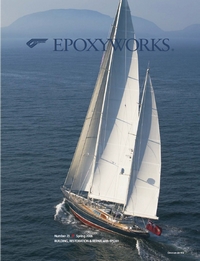Courtesy of Hodgdon Yachts
Above: Scheherazade is a 155′ Bruce King-designed ketch built by Hodgdon Yachts in Boothbay, Maine and launched September 27, 2003. Photo by Onne van der Wal.

Hodgdon Yachts of East Boothbay, Maine launched the 155′ ketch, Scheherazade. She is a beautiful union of wood/epoxy technology, elegant design, and superior craftsmanship. (more…)
